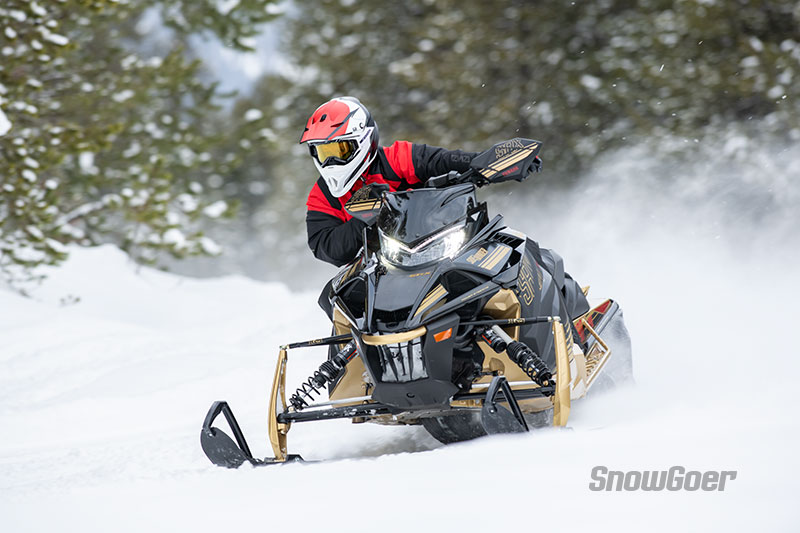Almost 200,000 people were killed in early 2004 after a tsunami struck southeast Asia. President George W. Bush announced an ambitious plan to take NASA back to the Moon, to Mars and beyond. Bush defeated Massachusetts Senator John Kerry to earn his second term in office.

Martha Stewart was sentenced to five months in prison for lying to the feds, New England’s Patriots beat the Carolina Panthers to win the Super Bowl and the Boston Red Sox defeated the St. Louis Cardinals to win the 100th World Series, which was watched by about 25.5 million viewers. Boston was the first city to have a Super Bowl and World Series winner in the same year since Pittsburgh in 1979.
Because we wouldn’t be giving you the whole story without it, 2004 was also the International Year of Rice.

Album of the Year: “Speakerboxxx/The Love Below” — Outkast
Highest Grossing Movie: Shrek 2
Best Male Country Vocal Performance: Tim McGraw – ‘Live Like You Were Dying’
At The Track
Arctic Cat’s rein continued at Eagle River when Larry Day edged out Cat teammate P.J. Wanderscheid to win the World Championship. Day stuck to his high line on the last lap while defending champion Wanderscheid, who was running low, had to lift for a split second because of lapped traffic, letting Day take the checkered flag. The historic fight went down as one of the best races in Eagle River history.
Mike Island led from flag to flag in the X Games snocross final to win his first gold medal. Why didn’t Blair Morgan win? He got squeezed outside at the start and then tangled with Levi LaVallee as he battled back toward the front. Tucker Hibbert took silver medal and Morgan ended up taking the bronze. LaVallee took the gold medal in X Games Hillcross competition two days later.
Crashes and injuries plagued the 2004 Soo I-500 so severely that officials called the race early, making leader John Hoos the winner after only 174 laps, which took about four hours to run. One fan was killed after being struck by a sled that crashed between turns three and four, and a handful of racers were sent to War Memorial Hospital in Sault Ste. Marie, Michigan, to treat injuries. Multi-time winner Troy Pierce called the race a joke and claimed he’d never return to the annual competition. “This race is history, because of its history,” he said.
Bryan Dyrdahl was known as an Arctic Cat cross-country racer, but he showed up at the USCC Red Lake I-500 with a rental Ski-Doo MX Z. The 24-year-old rode a flawless race and won in convincing fashion. Dyrdahl decided to enter the cross-country race while on his way home from the Soo I-500, which he raced a few weeks earlier with Yamaha driver Mike Gentz. “Mike wanted to try the [USCC] 500. Yamaha didn’t have a cross-country sled so we picked these up,” Dyrdahl said, indicating the Ski-Doos, which were borrowed from sponsor Reindeer Rentals. “At least now we have enough to pay for them.”
At Jackson Hole in late March, Ryan Zollinger returned to hillclimb competition after a one-year hiatus and won the Open Mod class with the fastest time of the weekend. He also won the Mod King title on a Polaris. Chris Anderson earned the Snow Week Racer of the Year honor with 56 wins in Stock, Improved Stock and Super Stock classes on the 2003 grass drag season.
Joey Strub won the Pro Open Oval final in Grantsburg, preventing Howie Steenberg from becoming the first driver to win three consecutive championships. The Ski-Doo duo of Craig Marchbank and Chris Anderson paired up again to collectively win 13 classes at Haydays, With Marchbank taking the modified classes and Anderson the stockers. D.J. Eckstrom was the top qualifier in the Pro Open at the season opening snocross in Duluth, Minnesota, and he won the final. Robbie Malinoski earned his first pro win in the stock final.
The Year In Sleds
After years of anticipation by Polaris faithful and the not-so-faithful — such as the Ski-Doo, Arctic Cat and Yamaha factories — the Roseau, Minnesota-based sled builder released the 900 Fusion. It was supposed to be the company’s answer to the REV, the Firecat and the RX-1.
Polaris couldn’t have picked a more appropriate name for the machine as it was a combination of technologies already developed by the other three factories. It had a laydown engine design, an A-arm front suspension and side-panel bodywork. While the IQ chassis was a good foundation for what would become a solid lineup of IQ-based snowmobiles a few years later, the 900 Fusion was a disaster plagued by service bulletins, mechanical failures, un-met performance expectations, vibration, heavy steering and a hefty waistline.
While the sled had more than its share of problems, it earned Snow Goer Top 10 accolades for adjustable ergonomics and a leading front suspension. Other Top 10 sleds were the Mach Z, RX-1, 900 RMK 151, F7 Firecat EFI, MX Z 550 Fan, RS Vector ER, F5 Firecat, MX Z 600 H.O. SDI Adrenaline and GTX Limited 600 H.O. SDI.
This year also marked the return of the Mach Z, a 1000cc two-stroke twin fed by semi-direct injection. Arctic Cat unveiled the M Series mountain sleds, which won the Snow Goer Sled of the Year honor and is still considered a top performer in the mountains. Yamaha was enjoying rapid growth in marketshare as snowmobilers were realizing the benefits of four-stroke engines and enjoying the new technology that was working well.






